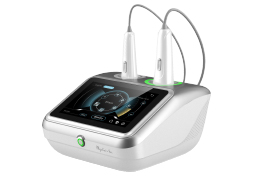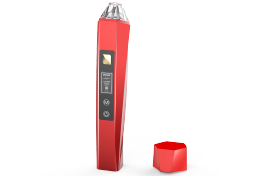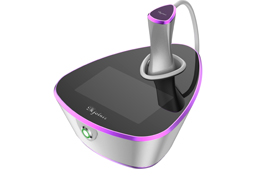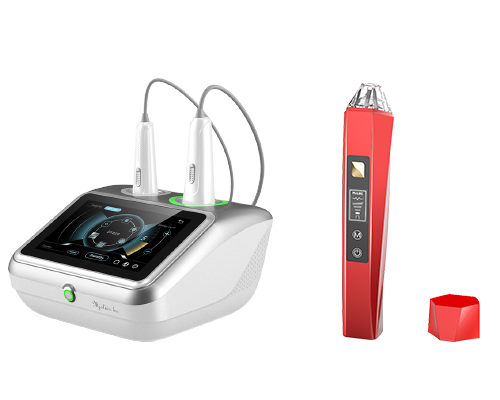 When it comes to non-surgical skin rejuvenation, the decision between a Plasma Pen or a Fractional Plasma device can be a difficult one. Both treatments utilize plasma energy to improve the appearance of the skin and offer a variety of benefits, but each has its own unique features and benefits. Understanding the differences between the two can help you make an informed decision about which treatment is right for you.
When it comes to non-surgical skin rejuvenation, the decision between a Plasma Pen or a Fractional Plasma device can be a difficult one. Both treatments utilize plasma energy to improve the appearance of the skin and offer a variety of benefits, but each has its own unique features and benefits. Understanding the differences between the two can help you make an informed decision about which treatment is right for you.
What is a plasma pen?
A plasma pen is a cosmetic device that uses plasma technology to perform non-surgical skin tightening and rejuvenation treatments. It works by emitting a small electrical arc that creates high-heat plasma energy that is used to make precise and controlled micro-incisions in the skin, causing it to tighten and rejuvenate. This device is often used for treatments such as skin tightening, wrinkle reduction, skin resurfacing, and improvement of skin texture and tone.
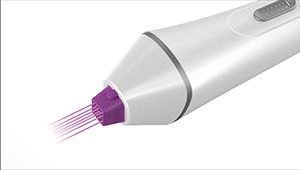
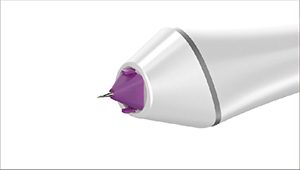
What is fractional plasma?
Fractional plasma refers to a type of plasma technology that is used in cosmetic skin treatments. Unlike traditional plasma treatments that use a continuous stream of plasma energy, fractional plasma treatments use a series of tiny plasma dots that are delivered to the skin in a controlled and fractionated manner.
This technology allows for a more precise and controlled application of plasma energy, which minimizes damage to surrounding healthy tissue and accelerates the healing process. As a result, fractional plasma treatments are considered to be gentler and less invasive than traditional plasma treatments and can be used to treat a wider range of skin concerns, including fine lines, wrinkles, acne scars, and uneven skin tone.
Fractional plasma treatments typically involve the use of a special device that delivers the plasma energy to the skin through a series of tiny dots or micro-incisions. This fractionated approach to plasma treatment results in improved outcomes, shorter recovery times, and less discomfort compared to traditional plasma treatments.
What can a plasma pen or fractional plasma device do?
People choose to undergo plasma pen or fractional plasma treatments for a variety of reasons, including:
- Non-surgical skin rejuvenation: Both plasma pen and fractional plasma treatments are non-invasive and do not require surgery, making them a popular choice for those who are looking to improve their skin's appearance without the risks and downtime associated with surgery.
- Fine lines and wrinkles: Both treatments can help to reduce the appearance of fine lines and wrinkles, resulting in a more youthful, refreshed appearance.
- Skin laxity: Plasma pen treatments can help to improve skin laxity, resulting in firmer, tighter skin.
- Pigmentation issues: Both plasma pen and fractional plasma treatments can be used to improve the appearance of age spots, sun damage, and other skin pigmentation issues.
- Acne scars: Fractional plasma treatments can help to improve the appearance of acne scars, resulting in smoother, clearer skin.
- Improved skin texture and tone: Both treatments can help to improve the overall texture and tone of the skin, resulting in a more even and radiant complexion.

Different between plasma pen and fractional plasma?
Plasma pen and fractional plasma are two different cosmetic treatments that use plasma technology to improve the appearance of the skin.
A plasma pen is a handheld device that delivers high-heat plasma energy to the skin to perform non-surgical skin tightening and rejuvenation treatments. The plasma energy is delivered to the skin in a continuous stream, which allows for the broad and general treatment of the skin.
Fractional plasma, on the other hand, uses a series of tiny plasma dots to deliver plasma energy to the skin in a controlled and fractionated manner. This technology allows for a more precise and targeted treatment, as the plasma energy is delivered only to specific areas of the skin. The fractionated approach also results in a gentler and less invasive treatment, with shorter recovery times and less discomfort compared to traditional plasma treatments.
In summary, plasma pen is a general treatment that uses a continuous stream of plasma energy, while fractional plasma is a more targeted and precise treatment that uses fractionated plasma energy to achieve improved results with less discomfort.
Treatments about plasma pen and Fractional plasma device?
Both plasma pen and fractional plasma devices are used for cosmetic skin treatments. However, there are some differences between the two in terms of how they work and the results they can achieve.
- Plasma pen: A plasma pen uses a high-heat plasma energy to perform non-surgical skin tightening and rejuvenation treatments. The plasma energy is delivered to the skin in a continuous stream, allowing for a more general treatment of the skin. Plasma pen treatments can improve the appearance of fine lines, wrinkles, and sagging skin, and can also be used to treat age spots, sun damage, and other skin pigmentation issues.
- Fractional plasma: A fractional plasma device uses a series of tiny plasma dots to deliver plasma energy to the skin in a controlled and fractionated manner. This technology allows for a more precise and targeted treatment, as the plasma energy is delivered only to specific areas of the skin. Fractional plasma treatments can improve the appearance of fine lines, wrinkles, acne scars, and other skin imperfections, and can also be used to improve skin texture, tone, and overall skin health.
In general, plasma pen treatments tend to be more general in nature and are best suited for people with more general skin concerns, such as skin laxity or uneven skin texture. Fractional plasma treatments, on the other hand, are more precise and targeted and are best suited for people with specific, targeted skin concerns, such as fine lines, wrinkles, or acne scars.
Which to choose Plasma pen or Fractional Plasma?
The choice between a plasma pen and fractional plasma will depend on your specific skin concerns and goals for treatment. Here are some factors to consider when deciding between these two treatments:
- Skin concerns: If you have specific, targeted skin concerns such as fine lines, wrinkles, or acne scars, fractional plasma may be a better option as it allows for a more precise and targeted treatment. On the other hand, if you have more general skin concerns such as skin laxity or uneven skin texture, a plasma pen may be more suitable.
- Invasiveness: Fractional plasma is typically considered to be a gentler and less invasive treatment, as the plasma energy is delivered to the skin in a fractionated manner. If you prefer a less invasive option, fractional plasma may be the better choice for you.
- Recovery time: The recovery time for plasma pen and fractional plasma can vary, but fractional plasma is typically associated with a shorter recovery time and less discomfort compared to traditional plasma treatments.
- Cost: The cost of plasma pen and fractional plasma treatments can vary, and is often dependent on the severity of your skin concerns and the experience of the practitioner performing the treatment.
Ultimately, the best way to determine which treatment is right for you is to consult with a qualified cosmetic professional who can evaluate your skin and provide a personalized recommendation. They will be able to consider your individual skin concerns and goals and advise on the best course of action to help you achieve the results you desire.
MjoInir Pro
Mjolnir Pro. (Multi–electrode plasma) FDA Cleared ①Technology innovation of cold plasma ②Replacement of Fractional laser and RF ③Free Marketing & Training Help & Top ROI...
MjoInir Mate
The First Cold Plasma Personal Beauty Device in the World; Patent-certified technology application, Non-invasive + painless, comfortable beauty precess...
MjoInir
Mjolnir is the first fractional plasma machine for face and body rejuvenation. ①Technology innovation of plasma ②Replacement of Fractional laser and RF ③More application and excellent result...
How to choose a manufacturer for plasma pens or fractional plasma devices?
When choosing a manufacturer for plasma pens or fractional plasma devices, there are several factors to consider to ensure that you are selecting a reputable and reliable source:
- Quality: Look for manufacturers that use high-quality materials and produce devices that are safe and effective for use. Research the product specifications and certifications to ensure that the devices meet industry standards.
- Reputation: Research the manufacturer's reputation by reading customer reviews and industry feedback. Look for manufacturers with a history of producing high-quality, reliable products.
- Customer support: Consider manufacturers that offer excellent customer support, including training and technical assistance, to ensure that you are able to safely and effectively use the devices.
- Price: While it's important to consider cost, don't let price be the sole deciding factor. Make sure to balance cost with quality, reputation, and customer support.
- Warranty: Look for manufacturers that offer a warranty on their products, to protect your investment in the event of any defects or malfunctions.
When choosing a manufacturer, it's important to take the time to thoroughly research and compare your options. You may also want to consider consulting with a professional in the cosmetic industry for guidance and recommendations.
Ultimately, the choice between a Plasma Pen or Fractional Plasma device will depend on your individual skin concerns and goals for treatment. It's important to consult with a qualified cosmetic professional to determine which treatment is right for you. They can assess your skin, discuss your concerns and goals, and recommend the best course of treatment to help you achieve your desired results.
In conclusion, both Plasma Pen and Fractional Plasma treatments offer a variety of benefits and can help to improve the appearance of the skin. Understanding the differences between the two can help you make an informed decision about which treatment is right for you.


